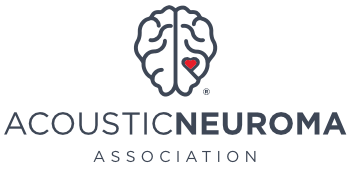Symptoms of Pineoblastoma


Pineoblastoma is a rare and aggressive type of brain tumor that starts in the pineal gland, a tiny gland located deep in the brain that helps regulate sleep by producing a hormone called melatonin. Though uncommon, pineoblastoma primarily affects children and can grow rapidly, leading to a variety of challenging symptoms.
Learning about what can cause it and associated symptoms can help families recognize it early and seek the right care. This can ultimately make a meaningful difference in the patient's prognosis and offer a path forward. This article will cover what pineoblastoma is, the possible causes, and the key signs to watch for.
What Is Pineoblastoma?
Pineoblastoma is a rare and serious form of cancer that develops in the pineal gland. Classified as a primitive neuroectodermal tumor (PNET), it arises from immature brain cells, giving it a high potential to grow and spread quickly.
They can affect other parts of the central nervous system, like the spinal cord. While this diagnosis can be overwhelming and daunting for patients and caregivers, knowing more about this condition can help families feel more equipped to handle it. With early detection, appropriate treatment, and support, there is potential to improve outcomes for patients with this type of brain tumor.
Symptoms of Pineoblastoma
The symptoms of pineoblastoma can vary widely based on the tumor's size, location, and growth rate. Because the pineal gland is close to areas of the brain that control vision, movement, and other vital functions, a tumor in this region can lead to a range of challenging symptoms. Some common signs of pineoblastoma include:
- Headaches: Persistent and worsening headaches are a frequent symptom, often caused by increased intracranial pressure as the tumor grows and obstructs normal fluid flow in the brain.
- Nausea and Vomiting: The increased pressure can lead to nausea and vomiting, particularly in the morning. These symptoms are typically more pronounced when lying down.
- Vision Problems: Pineoblastoma can press on parts of the brain involved in vision, leading to blurred or double vision, difficulty focusing, or trouble moving the eyes.
- Balance and Coordination Issues: Tumors near the brainstem or cerebellum may cause difficulties with walking, balance, and coordination.
- Sleep Disturbances: Because the pineal gland regulates sleep by making melatonin, pineoblastomas can disrupt sleep patterns, causing excessive drowsiness or trouble sleeping.
- Behavioral and Cognitive Changes: Patients may experience changes in mood, behavior, or personality, as well as difficulties with memory, focus, or speech.
These symptoms may develop slowly over time or appear suddenly, and they can be mistaken for other conditions, which can delay diagnosis. If these symptoms continue or worsen, it is essential to seek medical evaluation as early detection can make a difference in patient outcomes.
Why should you have your surgery with Dr. Cohen?
Dr. Cohen
- 7,500+ specialized surgeries performed by your chosen surgeon
- More personalized care
- Extensive experience = higher success rate and quicker recovery times
Major Health Centers
- No control over choosing the surgeon caring for you
- One-size-fits-all care
- Less specialization
For more reasons, please click here.
Causes and Risk Factors of Pineoblastoma
The exact cause of pineoblastoma remains unknown, but researchers believe a combination of genetic and environmental factors may contribute to its development. Understanding possible risk factors can help provide some insight.
- Genetic Mutations: Certain genetic changes are associated with an increased risk of pineoblastoma. For example, children with hereditary retinoblastoma, a rare eye cancer, have a higher chance of developing pineoblastoma. This connection suggests that some people may have a genetic predisposition that makes them more vulnerable to this type of brain tumor.
- Environmental Factors: Although less understood, some studies have explored potential environmental risk factors, like exposure to radiation. However, there is no conclusive evidence linking specific environmental exposures to the development of pineoblastomas.
- Age and Gender: Pineoblastoma is most common in young children, but can arise at any age. Boys and girls can develop pineoblastoma, though some research suggests a slightly higher prevalence in males.
Brief Overview of Treatment Options
While a detailed exploration of treatment options will be covered in a separate article, it’s worth noting that pineoblastoma treatment usually involves a combination of surgery, radiation therapy, and chemotherapy. The treatment plan is carefully tailored to each individual and can depend on the size and stage of the tumor, along with the patient’s overall health.
Rapid diagnosis and a comprehensive treatment plan can increase the likelihood of better outcomes, offering hope to families navigating this journey.
Pineoblastoma Stages and Progression
Unlike many other cancers, pineoblastoma doesn’t follow a traditional staging system. Instead, doctors assess the tumor based on its size, location, and whether it has spread to other areas of the brain or spinal cord.
Tumors that are localized and can be completely removed generally have a more favorable prognosis than those that have spread. The term "pineoblastoma stages" may also refer to how advanced the tumor is at diagnosis.
This information can guide treatment decision and help families understand what to expect moving forward. Understanding pineoblastoma can feel overwhelming for patients and caregivers but being informed about its symptoms and possible causes can be a valuable step towards earlier detection and effective care.
If you have concerns about any symptoms or need further information, do not hesitate to reach out for medical advice. Your care team is invested in your recovery, and are happy to answer any questions you may have.
Key Takeaways
- Pineoblastoma is a rare and aggressive brain tumor that primarily affects children.
- Symptoms include persistent headaches, nausea, vision problems, balance issues, and sleep disturbances.
- The exact causes of pineoblastoma are not well understood, but genetic mutations and certain risk factors may play a role.
- Early diagnosis and comprehensive treatment are crucial to improving the pineoblastoma prognosis and survival rate.
- If you or a loved one experiences persistent symptoms that may suggest a brain tumor, consult a healthcare professional for further evaluation.











